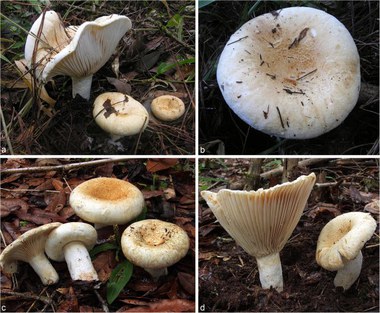Looks can be deceiving: Lynn explored the group around the deceptive milk caps
September 2019
The ectomycorrhizal genus Lactifluus is known to contain many species complexes, consisting of morphologically very similar species, which can be considered cryptic or pseudocryptic. In this paper, a thorough molecular study is performed of the clade around Lactifluus deceptivus (originally described by Peck from North America) or the deceptive milk caps. Even though most collections were identified as L. deceptivus, the clade is shown to contain at least 15 species, distributed across Asia and America, indicating that the L. deceptivus clade represents a species complex. These species are morphologically very similar and are characterized by a tomentose pileus with thinwalled hyphae and a velvety stipe with thick-walled hyphae. An ITS1 sequence was obtained through Illumina sequencing for the lectotype of L. deceptivus, dating from 1885, revealing which clade represents the true L. deceptivus. In addition, it is shown that three other described species also belong to the L. deceptivus clade: L. arcuatus, L. caeruleitinctus and L. mordax, and molecularly confirmed that L. tomentoso-marginatus represents a synonym of L. deceptivus. Furthermore, two new Neotropical species are described: Lactifluus hallingii and L. domingensis.
Link to the paper: https://imafungus.biomedcentral.com/articles/10.1186/s43008-019-0017-3
